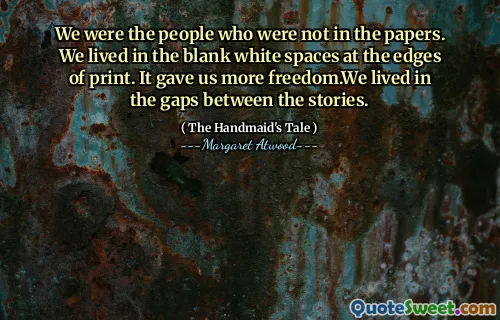A chair, a table, a lamp. Above, on the white ceiling, a relief ornament in the shape of a wreath, and in the center of it a blank space, plastered over, like the place in a face where the eye has been taken out. There must have been a chandelier, once. They've removed anything you could tie a rope to.
The scene described evokes a stark, stripped-down environment where furniture items like a chair, table, and lamp create an unsettling emptiness. The presence of a white ceiling adorned with a wreath-like ornament, but marred by a blank center, suggests the absence of something significant—a chandelier that once hung there, now replaced by a void. This imagery creates a sense of loss and neglect.
The line about removing anything to which one could tie a rope hints at a constraining atmosphere, indicative of control and oppression. The metaphor of the missing chandelier, representing both beauty and light, aligns with the overarching themes of absence and restriction prevalent in Margaret Atwood's "The Handmaid's Tale." The imagery reinforces the oppressive conditions faced by the characters in the dystopian setting.






